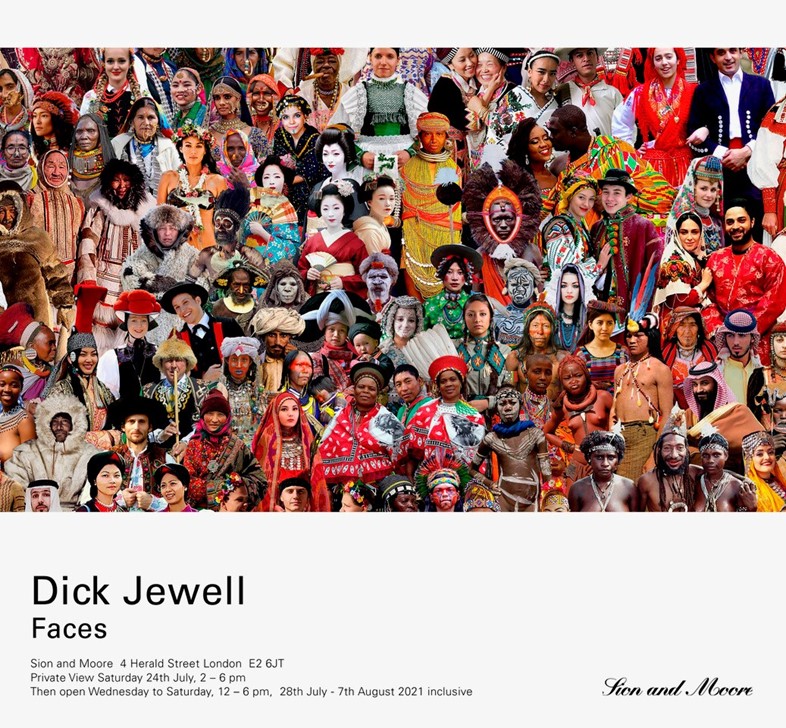The multidisciplinary artist tells AnOther about his upcoming exhibition at Sion and Moore, which looks at the subject of cultural appropriation
Six months into lockdown, multidisciplinary artist Dick Jewell reached a crossroads. He had just completed his large-scale digital collage, One Blood – a kaleidoscopic collection of portraits made around the globe of people dressed in their native clothes, jewellery, and headpieces – but was unable to continue working on the second episode of his film Head2Head due to social-distancing measures.
“Lockdown seemed to slow time down and deadlines went out of the window,” he tells AnOther. With three of his forthcoming exhibitions suspended, Jewell began to think about new ways to make and exhibit his art, offering a silver lining to an otherwise dark time. “With my work, I only ever do what I want to do and I do it to maintain my sanity,” he says.
Throughout his career, Jewell has been drawn to faces of every conceivable sort, so it’s far from surprising that he has long felt a profound kinship with the 1990 Run-DMC track, Faces. Three decades on, Jewell found the song particularly resonant in light of how technology has transformed the way we engage with the human face. While social media apps have elevated the selfie into one of the most ubiquitous photography genres of our time, the world turned to Zoom to connect in lockdown.
Recognising the inherent connection between Run-DMC’s song and his new work, Jewell created Faces, a film that animates One Blood and pairs it with a carefully sequenced progression to the lyrics and rhythm of the track. On July 28, Jewell debuts Faces at Sion and Moore in London, in a new exhibition that explores cultural appropriation en masse.
“My overall intent was to bring people together,” Jewell explains of the work, “by manipulating everyone to an equal scale while perusing aspects of tribal identity through nationality, religion, customs and fashion, and its links to costume and craft.”
To underscore how our awareness of cultures is often propagated by the internet, Jewell placed the image of an indigenous man on a laptop in the central foreground, and included a photograph of an indigenous woman reading an issue of Vogue in the throng. Jewell includes images of a Zulu punk and a Maori Hells Angel, as well as the disgraceful American custom of dressing in First Nations attire on Halloween, “even though I consider that totally inappropriate,” he says.
Using digital montage to create narratives that explore aspects of personality and behaviour, Jewell captures the spirit of the times through one of the most accessible and immediate forms of art. “Faces merges our relationship with celebrity, face swapping, tribal and online culture, ageing and self-image, with politics and advertising, employing the humour of the zeitgeist we encounter every day on social media platforms,” he says.
“As with viewing any work, everyone carries their own baggage and we can’t help but project our own individual opinions or relationships onto the themes that arise within Faces. With its rapidity of images, Faces shifts our perceptions and interrupts the processing of our personal preconceptions and prejudices of every face we see; ultimately, towards promoting a harmony and unity amongst people, regardless of their circumstances or appearance.”
Dick Jewell: Faces is at Sion and Moore in London until August 7, 2021.
